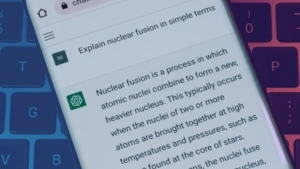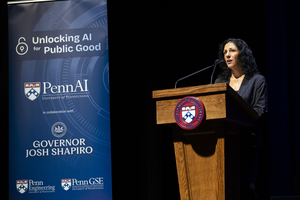Faculty Expert
-
Betty Chandy
Director for Technology Integration and Learning Design, Catalyst @ Penn GSE
Policy, Organizations, Leadership, and Systems Division
Since OpenAI launched ChatGPT a few months ago, the question on everyone’s mind has been, "How will this change our world?" ChatGPT is one of the world's most advanced machine learning and language processing models. It can read, understand in context, and respond in a human-like way. As educators, we wonder what this means for teaching and learning in the classroom.
But education is about more than just the correct answers or perfect essays. Education is acquiring knowledge, skills, values, beliefs and habits. It is the process that matters more than the product. Calculators did not make math redundant, and the internet did not make schools obsolete. AI will create opportunities that were unimaginable a year ago.
Here are five things classroom teachers can do with ChatGPT starting today:
- Use ChatGPT as a starting point. Have students generate answers on GPT and then work from there. GPT-generated essays are sometimes 'surface' level analyses and can be boring and sometimes redundant. Teachers can use this to work with the class to think through how they can improve the essay and build in deeper analysis.
- Ask ChatGPT to generate articles on topics at your students' reading level. You can also give it your existing articles and ask it to rephrase them to, say, a second-grade or 12th-grade reading level so that you can provide the same content for different students at varied reading levels.
- Ask ChatGPT to suggest activities. You can ask it to generate entire lesson plans if you provide it with the standards and grade level. If you don't like what it gives you, you can prompt it to regenerate another one, this time with games or activities built into it. Go ahead, play with different prompts, and have fun with it.
- Focus on the process instead of the final product. Using tools like Google docs that track the development and evolution of the student product can help you be sure that it was not a copy/paste from GPT.
- Provide project-based learning scenarios. Scenarios anchored in local and authentic contexts help prevent misuse of ChatGPT. Students can use GPT to inform their work, just like they use the web now, but would need to think through the ideas and extrapolate to their own contexts.
Additionally, consider the use of a Flipped classroom model, which allows you to offload instructional videos as homework while freeing in-class time for discussion and performance assessments so that you have a better understanding of where your students are and the progress they are making.

Betty Chandy has worked extensively with technology professional development programs for teachers in the U.S. and India. As the Director of Online Learning for Catalyst, Penn GSE's center for education innovation, she currently runs the Virtual Online Teaching (VOLT) certificate program and the Experiences in Applied Computational Thinking (EXACT) program for educators. Chandy started her career as a high school teacher and instructional coach, then moved into research exploring the impact of professional development on teachers' pedagogical practices. Her research interests include the design of learning environments, online teaching and learning, using innovative technology within classrooms, and teacher development.
Subscribe to the Educator's Playbook
Get the latest release of the Educator's Playbook delivered straight to your inbox.
Media Inquiries
Penn GSE Communications is here to help reporters connect with the education experts they need.










